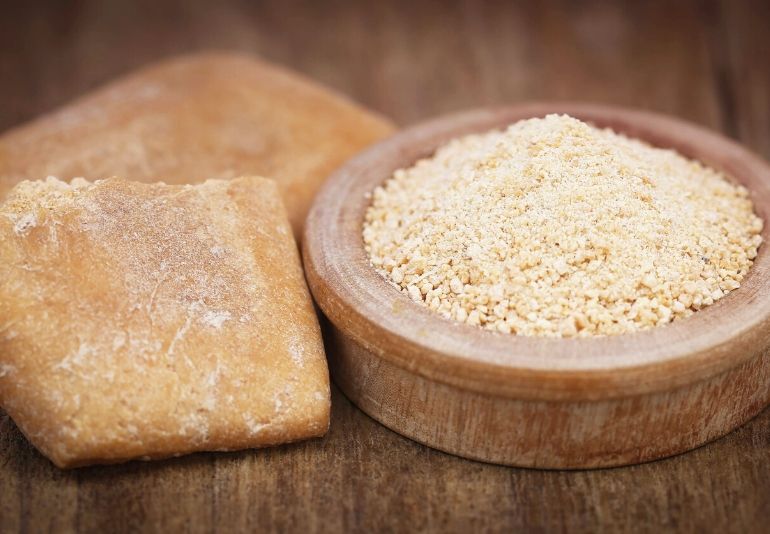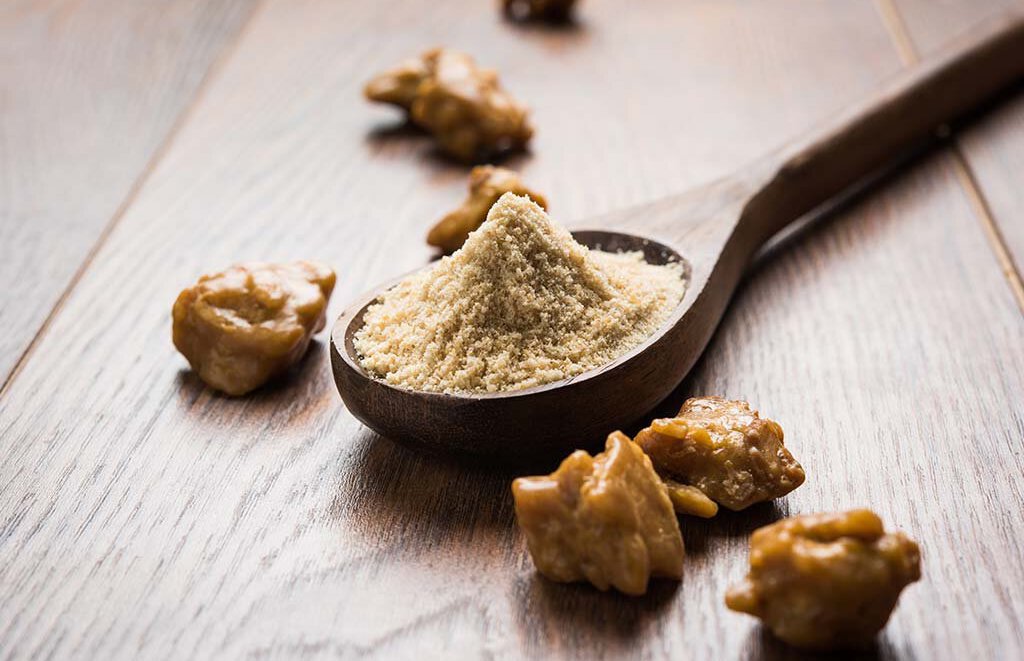The global market is witnessing a significant rise in the demand for organic hing, driven by increasing consumer awareness of health, sustainability, and natural food products. Organic hing, free from additives and chemicals, is gaining popularity for its numerous health benefits, including its role in digestion, immunity, and traditional medicine. This surge is also fueled by the growing interest in clean-label ingredients and eco-friendly farming practices. As a staple in Indian cuisine and a valued spice in various global dishes, organic hing is carving a niche in both culinary and wellness industries, making it a sought-after product in international markets.
What are the health benefits of using organic hing compared to non-organic hing?
Short Summary: Organic hing offers better digestive health, reduces inflammation, and contains fewer harmful chemicals compared to non-organic hing.
Long Answer:
- Digestive Health: Organic hing is known for its potent digestive properties, helping to reduce bloating, gas, and indigestion. Unlike non-organic hing, which may contain harmful chemicals and pesticides, organic hing provides a purer form of relief, making it a healthier choice for those with sensitive digestive systems.
- Anti-inflammatory: It possesses anti-inflammatory properties that can help reduce inflammation in the body. This is particularly beneficial for people suffering from chronic inflammation or inflammatory diseases. Organic hing’s natural composition ensures that these benefits are derived without the risk of ingesting unwanted synthetic additives.
- Fewer Chemicals: Organic hing is free from synthetic pesticides and fertilizers, ensuring a purer product with fewer harmful residues. This purity not only enhances the health benefits but also contributes to a cleaner, more sustainable agricultural practice, benefiting both consumers and the environment.
- Rich in Nutrients: Contains essential nutrients like iron, calcium, and fiber, promoting overall health and well-being. These nutrients are often more bioavailable in organic products, meaning the body can absorb and use them more efficiently, leading to better health outcomes.
How does the demand for organic hing vary across different regions and cultures?
Short Summary: Demand for organic hing varies significantly, with high demand in regions with strong culinary traditions, such as India and the Middle East, and growing interest in health-conscious markets worldwide.
Long Answer:
- India and Middle East: These regions have a deep-rooted culinary tradition that incorporates hing, leading to high demand for organic varieties. In these areas, hing is not just a spice but an essential component of traditional medicine and daily cooking, driving consistent demand for higher-quality, organic options.
- Western Countries: Growing awareness of health benefits and interest in organic products is driving demand in North America and Europe. As consumers become more health-conscious and environmentally aware, the preference for organic products, including spices like hing, has increased substantially. This shift is also supported by culinary trends that embrace global flavors.
- Asia-Pacific: Increasing disposable income and a shift towards healthier lifestyles are boosting demand in countries like Japan and China. As economic prosperity rises, so does the ability and willingness to invest in health, leading to a greater demand for organic products that promise better health and environmental sustainability.
- Global Trends: The global shift towards natural and organic foods is contributing to the rising demand for organic hing across various cultures. This trend is driven by a collective move towards healthier, more sustainable living practices, influenced by both personal health goals and global environmental concerns.
What are the environmental impacts of producing organic hing, and how do they compare to conventional methods?
Short Summary: Organic hing production is more environmentally friendly, reducing soil degradation, water pollution, and carbon footprint compared to conventional methods.
Long Answer:
- Soil Health: Organic farming practices enhance soil fertility and structure, preventing soil erosion and degradation. By avoiding synthetic chemicals, organic farming preserves soil microbiota, crucial for maintaining soil health and productivity over time.
- Water Quality: Reduced use of chemical fertilizers and pesticides minimizes water pollution, protecting aquatic ecosystems. This practice ensures that harmful chemicals do not leach into waterways, preserving the quality of drinking water and the health of aquatic life.
- Biodiversity: Organic farms support greater biodiversity by providing a habitat for various plant and animal species. These practices create a balanced ecosystem where natural pest predators thrive, reducing the need for chemical interventions and fostering a more resilient agricultural environment.
- Carbon Footprint: Organic farming typically has a lower carbon footprint due to sustainable practices like crop rotation and composting. These methods not only sequester carbon in the soil but also reduce greenhouse gas emissions associated with chemical fertilizer production and usage.
- Conventional Farming: Often relies on chemical inputs and monoculture, leading to soil depletion, water contamination, and higher greenhouse gas emissions. The intensive use of synthetic fertilizers and pesticides in conventional farming can result in significant ecological damage and long-term sustainability issues.
Are there any certifications or standards that organic hing must meet to be considered truly organic?
Short Summary: Organic hing must meet certifications such as USDA Organic, EU Organic, and India Organic to be considered truly organic.
Long Answer:
- USDA Organic: Ensures that hing is produced without synthetic pesticides, fertilizers, and genetically modified organisms (GMOs). This certification is widely recognized and trusted by consumers, ensuring that the products meet strict organic standards.
- EU Organic: Requires compliance with the European Union’s regulations for organic farming, including restrictions on chemical inputs. Products bearing this certification must adhere to rigorous guidelines, ensuring their organic integrity throughout the production process.
- India Organic: Certifies that hing is grown and processed according to India’s National Program for Organic Production (NPOP). This certification ensures that organic hing produced in India meets both local and international standards, providing assurance of quality and authenticity.
- Other Standards: Additional certifications such as JAS (Japan), and organic logos from other countries, further validate the organic status of hing. These certifications provide an extra layer of trust and verification for consumers seeking genuinely organic products.
How can consumers ensure they are purchasing genuine organic hing in the market?
Short Summary: Consumers can ensure they are purchasing genuine organic hing by looking for trusted certifications, checking the ingredient list, and buying from reputable brands.
Long Answer:
- Certifications: Always look for trusted organic certifications on the packaging, such as USDA Organic, EU Organic, or India Organic. These labels provide a reliable indication that the product meets established organic standards.
- Ingredient List: Check the ingredient list to ensure there are no synthetic additives or preservatives. Genuine organic products will have a clean and transparent ingredient list, free from artificial substances.
- Reputable Brands: Purchase hing from reputable brands known for their commitment to organic and sustainable practices. Brands with a strong reputation in the organic market are more likely to offer authentic, high-quality products.
- Retailers: Buy from certified organic retailers or trusted online marketplaces that verify the authenticity of their products. These retailers often have stringent vetting processes to ensure the organic integrity of their offerings.
Conclusion
The rising demand for organic hing in the global market is driven by its health benefits, environmental advantages, and the growing consumer preference for natural and organic products. By understanding the regional variations in demand, environmental impacts, and certifications, consumers can make informed choices. Ensuring the authenticity of organic hing through trusted certifications and reputable brands is essential for enjoying its full benefits. As the global market continues to evolve, the future looks promising for organic hing as a staple in kitchens worldwide.
In conclusion, the shift towards organic hing is a reflection of broader trends in the food industry. Consumers are increasingly prioritizing health, sustainability, and authenticity in their food choices. Organic hing, with its numerous benefits and strong market demand, is well-positioned to become a key player in this movement.

